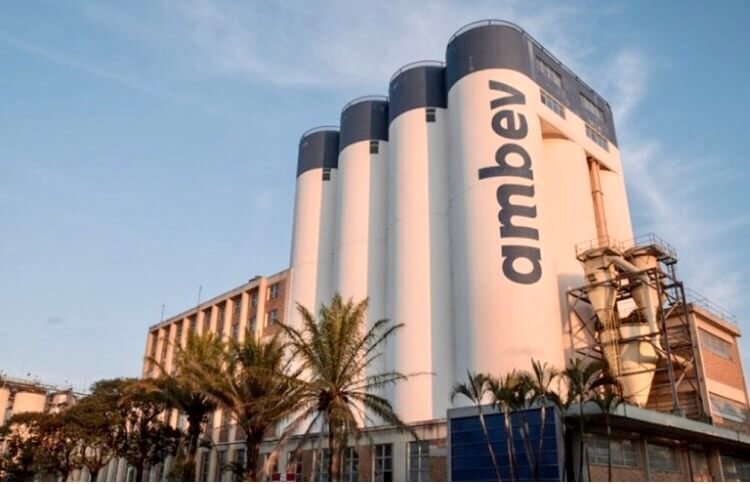The transition to cleaner energy sources to reduce carbon emissions and limit the impacts of climate change puts more pressure on highly polluting coal-fired power plants. Despite the commitment made by 21 countries since the Paris Agreement in 2015 to gradually eliminate the use of this energy source by 2030, there are actions that go in the opposite direction. In Brazil, President Jair Bolsonaro sanctioned, in January, a law that extends until 2040 the contracts of coal-fired thermoelectric plants in Santa Catarina, a decision criticized by industry experts.
Santa Catarina and Rio Grande do Sul concentrate 99.97% of the national coal reserves. The region’s deposits are sufficient to generate 18,600 megawatts (MW) for 100 years, but there is pressure on the plants operated by the two largest generation companies in the country: Eletrobras and Engie Brasil Energia (EBE), the national arm of the French group.
Sanctioned by Bolsonaro on January 5, Law 14.299 creates the Fair Energy Transition Program (TEJ), whose goal is to prepare the coal region of Santa Catarina for the “probable” end, by 2040, of the national coal-fired thermoelectric generation activity. By law, the TEJ seeks to promote a “fair” energy transition for the coal region of this state, observing the “environmental, economic and social impacts and the valorization of energy and mineral resources in line with the carbon neutrality to be achieved under the targets set by the federal government”.
The law benefits the Jorge Lacerda thermoelectric complex, in Capivari de Baixo (state of Santa Catarina), via electrical energy contracting. The complex was sold, in 2021, by EBE to the asset management company FRAM Capital. EBE is also in the process of selling the Pampa Sul plant (state of Rio Grande do Sul), closing the fossil generation portfolio in the country. The project in Santa Catarina has 857 MW of capacity and is formed by three plants, the first one operating since 1965, and the last one since 1997, all with supply contracts until 2028. This is the date agreed with the Brazilian Electricity Regulatory Agency (Aneel) for the end of the contract. But with the sanction of the new law, the Jorge Lacerda complex can produce energy at least until 2040.
The sale of Pampa Sul, with 345 MW, is still under negotiation. With an investment of more than R$2 billion, the project, in Candiota (state of Rio Grande do Sul), on the border with Uruguay, started operating in 2019 and is considered the largest of the South region. The plant’s supply contract runs until 2050. Located in the city of Pampa Sul, Candiota III, of 350 MW, is operated by CGT Eletrosul, a subsidiary of Eletrobras. The plant has been in operation since 2011 but also received investments between 2018 and 2019.
According to the CGT Eletrosul, the plant has “fundamental importance” for Brazil and Uruguay, as it helps control the voltage of the transmission system between the countries. The Candiota Pole was the subject of controversy in the past, due to complaints from Uruguayan communities about the incidence of alleged “acid rain,” a phenomenon caused by air polluted by sulfur and nitrogen emissions.
Environmental concerns have led investors to divest coal-fired power plants, accelerating the growth of renewable sources in Brazil. By 2021, centralized solar power, generated in plants, will surpass coal-fired thermal plants in capacity.
Since 2013, CGT Eletrosul has deactivated three coal-fired thermal plants in Rio Grande do Sul state: São Jerônimo, Nova Usina Termelétrica Porto Alegre, and Presidente Médici plants. Together, they had more than 600 MW of capacity, but face criticism for their environmental impacts. This month the Federal Court annulled the environmental licensing process of the Guaíba Mine (state of Rio Grande do Sul), after a lawsuit by indigenous and environmental defense associations.
The federal government recognizes that new large projects in the sector should no longer arise. The EPE forecast is that the coal source will not receive investments in new projects until 2031, according to the ten-year expansion plan put out for public consultation last month. With this, the installed capacity of this source will fall by almost half over the decade.
For the professor at the Federal University of Rio de Janeiro (UFRJ) and former president of the EPE, Maurício Tolmasquim, it makes no sense to extend the contracts of coal-fired thermal plants. He says that, despite not having such a big impact on Brazilian emissions, the end of the use of coal for energy generation in Brazil could bring significant image gains for the country.
“Any initiative to contract or expand contracts for coal-fired power plants goes against what the rest of the world is doing. Brazil can be one of the first countries to decarbonize the power generation mix. At a moment in which we are being so badly evaluated for environmental issues, making the mix liquid in carbon would send a positive signal to the world and would bring geopolitical gains to the country,” he affirmed.
In Brazil, coal has marginal participation in electricity generation and emissions. By the end of 2021, coal-fired plants had an installed capacity of 3 gigawatts (GW), representing less than 2% of the Brazilian power generation mix, compared to an 80% participation of renewable sources, such as hydroelectric, solar, and wind power, according to the Energy Research Company (EPE).
The scenario is different from other countries. In China, coal accounts for more than 60% of electricity generation, a percentage that reaches almost 70% in India. In U.S. case, the source’s share in the power generation mix fell by almost half between 2010 and 2020, according to the U.S. Energy Information Administration, but still represented almost 20% at the end of the last decade.
According to the International Energy Agency (IEA), a group of large countries, including Brazil, have plans to zero emissions, but not eliminate coal. Also, part of this group is China, Japan, South Korea, South Africa, and the United States. The list of 21 countries with commitments to ban coal by 2030 includes European nations as well as Canada, Chile, Israel, and New Zealand.
Interest in coal-fired generation projects is waning since ESG (environmental, social, and governance) criteria have become more prominent in the choice of investments. The commitment to reduce the use of fossil fuels was reinforced last year in the final agreement of the Climate Conference (COP 26), signed by 196 countries, including Brazil.
“Brazil needs to build a transition plan for a low carbon economy. The issue is increasingly complex and influences more tied to the direction of capital in the world. It is becoming more expensive for capital to finance fossil projects and there is a tendency to price products that are more carbon intensive,” says Márcio Pereira, partner of the environmental and climate change area of law firm BMA Advogados.
An eventual end to the operations of coal-fired power plants would affect, however, the supply of electricity in the South, which would depend more on receiving energy from other regions, say specialists. This would require new investments in electric transmission.
The president of the Brazilian Association of Mineral Coal, Fernando Zancan, believes that coal can still have space in a decarbonized world, with the evolution of technology to compensate and capture carbon emissions. “Brazil is going to grow, demand more energy per capita, and for this, the country needs reliable and safe sources. The cheapest thermal plants are coal-fired, and if you shut them down, there will be an increase in cost,” he says. He believes that there is geopolitical interest in keeping part of the generation tied to coal, more stable in terms of prices, which is produced domestically in several countries.
Despite the environmental issues, there are still investments in coal projects in Brazil. This is the case of Copel, which in 2021 signed contracts to modernize the Figueira thermal plant (PR), with investments of R$37.3 million to expand the plant’s capacity without having to increase coal consumption. Eneva has stakes in the coal-fired plants Itaqui (state of Maranhão) and Pecém II (state of Ceará).
Source: Valor International
https://valorinternational.globo.com



/i.s3.glbimg.com/v1/AUTH_37554604729d4b2f9f3eb9ad8a691345/internal_photos/bs/2022/U/J/5fqQuwQKKC5M1FvUoubw/15esp-100-estados-a14-img01.jpg)


/i.s3.glbimg.com/v1/AUTH_37554604729d4b2f9f3eb9ad8a691345/internal_photos/bs/2022/N/E/HNKZeuRpqBDHV4Rh9K1g/16bra-100-tcu-a5-img01.jpg)
/i.s3.glbimg.com/v1/AUTH_37554604729d4b2f9f3eb9ad8a691345/internal_photos/bs/2022/W/I/n9GLYAQfu9B6gNOn18YA/16emp-100-ener-b1-img01.jpg)

